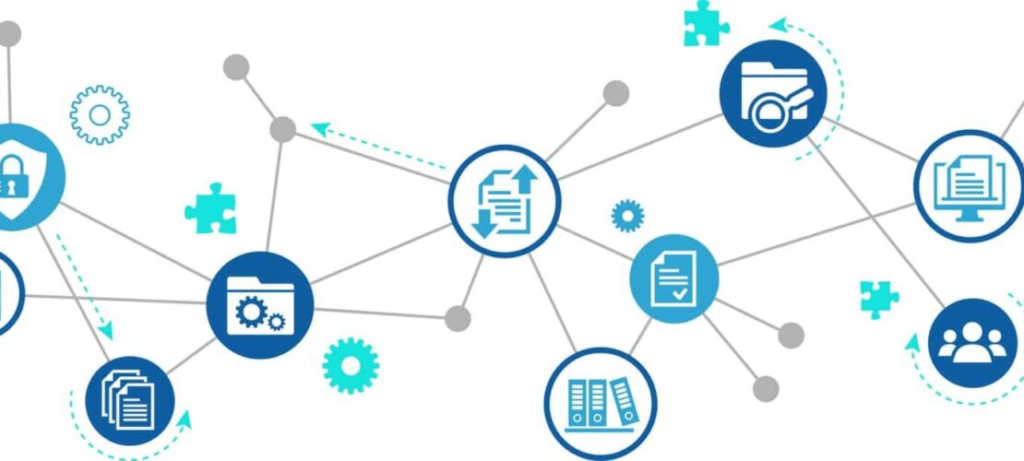Haphazard document management and lack of organizational rigor in construction management lead to inefficiencies, errors, miscommunications, and delays. This fragmentation hampers decision-making, increases compliance risks, and raises operational costs, ultimately derailing project timelines, eroding stakeholder trust, and compromising deliverable quality.
In the fast-paced world of construction management, the importance of efficient document management cannot be overstated. However, many projects suffer from haphazard document handling and a lack of organizational rigor. This disarray leads to a cascade of inefficiencies and complications that significantly impact project outcomes.

The Domino Effect of Poor Document Management
When document management is poorly handled, critical information often becomes fragmented and elusive. This fragmentation fosters a proliferation of errors, miscommunications, and delays. For instance, when project plans, contracts, and compliance documents are not systematically organized, team members may find themselves working with outdated or incorrect information. This can result in costly mistakes, such as ordering the wrong materials or failing to meet regulatory requirements.

Impediments to Decision-Making
Effective decision-making in construction relies on timely and accurate information. When documents are scattered and disorganized, it impedes the decision-making process. Project managers might struggle to access the information they need quickly, leading to delays in critical decisions. This not only slows down the project but also increases the risk of making uninformed choices that could jeopardize the project’s success.

Compliance Risks and Inflated Costs
Compliance with industry regulations and standards is non-negotiable in construction. Disorganized document management exacerbates compliance risks, as it becomes challenging to track whether all regulatory requirements are being met. This can lead to legal complications and hefty fines. Additionally, the inefficiencies caused by poor document management inflate operational costs. Time and resources are wasted searching for documents, correcting errors, and managing the fallout from miscommunications.

Eroded Stakeholder Trust
Stakeholder trust is a crucial component of any construction project. When project timelines are derailed due to inefficiencies and errors, it erodes the trust of clients, investors, and partners. Deliverable quality is compromised, and the reputation of the construction company can suffer long-term damage. Maintaining organized documentation is key to ensuring transparency and accountability, which in turn fosters trust and confidence among stakeholders.
The Solution: A Cohesive, Systematic Approach
To address these issues, the construction industry must adopt a cohesive, systematic approach to document management. This involves implementing standardized processes for document creation, storage, and retrieval. Utilizing digital tools and document management systems can significantly enhance organization and accessibility. These systems allow for real-time updates, version control, and easy sharing of documents among team members. Scroll to the bottom of this article for a plan for Adopting a Cohesive, Systematic Approach to Document Management in Construction.
Training and development programs are also essential to ensure that all team members are proficient in the use of these tools and understand the importance of maintaining organized documentation. By fostering a culture of organization and accountability, construction companies can optimize project outcomes, meet industry standards, and maintain stakeholder trust.
Overall, the haphazard document management and lack of organizational rigor within construction management are precipitating a cascade of inefficiencies and complications. This disarray engenders a proliferation of errors, miscommunications, and delays, as critical information becomes fragmented and elusive. The resultant confusion impedes decision-making processes, exacerbates compliance risks, and inflates operational costs. Consequently, project timelines are derailed, stakeholder trust erodes, and the overall quality of deliverables is compromised. Without a cohesive, systematic approach to document management, the potential for optimizing project outcomes remains severely constrained, undermining the industry’s ability to meet its ever-evolving demands and standards.

Adopting a Cohesive, Systematic Approach to Document Management in Construction
Adopting a cohesive, systematic approach to document management in construction involves thorough planning, the implementation of standardized processes, and the use of advanced digital tools. By focusing on training, continuous monitoring, and improvement, construction companies can enhance efficiency, reduce errors, and ensure higher quality project outcomes. This structured approach will help meet industry standards and maintain stakeholder trust, ultimately leading to more successful and profitable projects.
1. Assessment and Planning
1.1. Evaluate Current Document Management Practices
- Conduct a thorough review of existing document management processes.
- Identify strengths, weaknesses, and areas for improvement.
- Gather feedback from all stakeholders involved in document handling.
1.2. Define Objectives and Goals
- Establish clear objectives for the new document management system (DMS).
- Set measurable goals such as reduced document retrieval time, fewer errors, and improved compliance tracking.
1.3. Assemble a Project Team
- Form a cross-functional team including project managers, IT specialists, and administrative staff.
- Assign roles and responsibilities for the implementation process.
2. Designing Standardized Processes
2.1. Document Creation Standards
- Develop templates for various types of documents (e.g., contracts, project plans, compliance forms).
- Establish guidelines for naming conventions, version control, and metadata tagging.
2.2. Document Storage Protocols
- Define a centralized digital repository for storing all project-related documents.
- Establish folder structures and access permissions based on project roles.
2.3. Document Retrieval Processes
- Implement a standardized procedure for document retrieval, including search functionalities and indexing.
- Ensure the process is user-friendly and accessible to all authorized personnel.
3. Implementing Digital Tools and Systems
3.1. Select a Document Management System (DMS)
- Research and select a DMS that meets the specific needs of the construction industry.
- Ensure the system supports real-time updates, version control, and easy document sharing.
3.2. Integrate with Existing Systems
- Ensure the DMS can integrate with other software used in the construction process (e.g., project management tools, BIM software).
- Plan for data migration from existing systems to the new DMS.
4. Training and Development
4.1. Develop Training Programs
- Create comprehensive training programs for all employees involved in document management.
- Include modules on using the new DMS, understanding standardized processes, and the importance of accurate documentation.
4.2. Conduct Training Sessions
- Schedule training sessions for different user groups (e.g., project managers, administrative staff).
- Use hands-on training, workshops, and online resources to ensure thorough understanding.
4.3. Provide Ongoing Support
- Establish a helpdesk or support team to assist with any issues or questions related to the new system.
- Offer refresher training sessions periodically to reinforce best practices.
5. Monitoring and Continuous Improvement
5.1. Monitor Performance
- Track key performance indicators (KPIs) such as document retrieval times, error rates, and compliance incidents.
- Use this data to assess the effectiveness of the new document management processes.
5.2. Solicit Feedback
- Regularly gather feedback from users to identify any issues or areas for further improvement.
- Encourage a culture of continuous feedback and open communication.
5.3. Make Necessary Adjustments
- Based on performance data and user feedback, make adjustments to processes and tools as needed.
- Stay updated with the latest advancements in document management technology and best practices.





